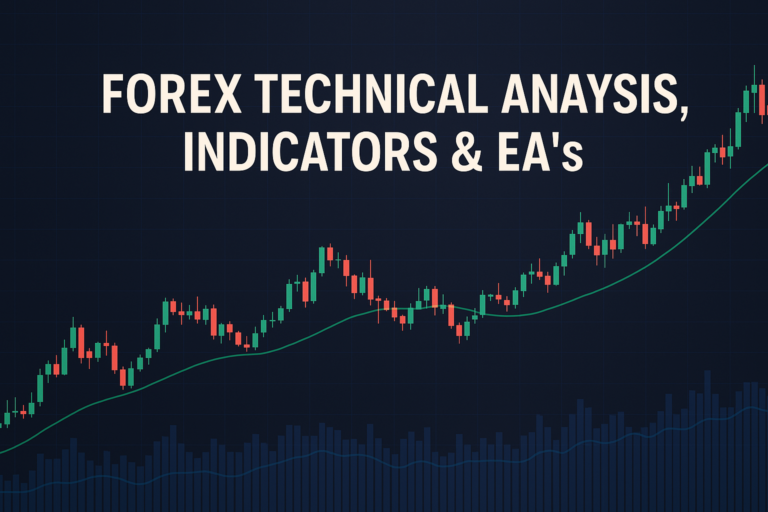
Stop-Loss Not Triggering can lead to unexpected losses in Forex trading. Understand and manage this issue to protect your investments effectively.
Many Forex traders face a frustrating experience: their stop-loss orders not triggering. This issue can lead to unexpected losses that traders, both beginners and professionals, dread. Imagine placing a safety net to protect your investment, only to find it has holes in it. This problem is highly relevant as it can affect anyone trading in volatile markets.
Understanding why stop-loss not triggering is crucial for every trader. Whether you’re just starting or have years of experience, this problem can crop up anytime. It’s essential to grasp the reasons behind it and find solutions, ensuring your trading journey remains profitable and less stressful.
On April 24, 2025, the market experienced significant shifts due to global events. You can read more in the Forex Fundamental News Analysis April 24, 2025.
Understanding the Problem
So, what exactly is the issue of stop-loss not triggering? Simply put, it occurs when the market price hits your stop-loss level, but your order doesn’t execute. This can happen due to slippage, high volatility, or technical issues with your broker. Real trading situations often reflect this, such as during economic news releases when markets react sharply.
For instance, imagine you set a stop-loss at 1.2000 for a EUR/USD trade. Suddenly, a major news event causes the price to jump to 1.1985 and then back to 1.1990 without executing your stop-loss. This is slippage in action, and it can wipe out your profits or increase your losses significantly.
Solutions for Stop-Loss Not Triggering
To tackle the issue of stop-loss not triggering, let’s explore some step-by-step solutions and best practices.
1. Choose a Reliable Broker
Ensure you work with a trustworthy broker who offers good execution speeds. Research brokers’ reviews and their policies on slippage.
2. Adjust Your Stop-Loss Strategy
Consider using a wider stop-loss in highly volatile markets. This can prevent premature triggering during price swings.
3. Use Guaranteed Stop-Loss Orders
Some brokers offer guaranteed stop-loss orders. These ensure that your stop-loss will trigger at the price you set, regardless of market conditions.
4. Monitor Market Conditions
Stay updated with economic news and events that might cause volatility. This will help you adjust your trades accordingly.
5. Utilize Technology
Use trading platforms that provide real-time data and alerts to stay informed about your trades.
6. Test Your Strategies
Backtest your trading strategies in a demo account to see how they perform in different market conditions.
7. Pro Tips & Warnings
- Trust but Verify: Always verify your broker’s order execution policies.
- Adapt to Market Conditions: Be flexible with your stop-loss strategies during high-impact news events.
- Keep Learning: Stay informed about trading strategies and market conditions.
For more insights, check out my article on Indicators showing conflicting signals across timeframes.
Frequently Asked Questions
How do I detect this issue in real-time?
Detecting if your stop-loss order is not triggering can be challenging. Always monitor your trades actively, especially during high volatility. Use tools that alert you when prices approach your stop-loss levels. For example, you can set up alerts on your trading platform.
Can brokers legally do this?
Brokers are generally required to execute orders as per their terms. However, during extreme market conditions, slippage may occur. Make sure to read your broker’s policy on slippage to understand your rights.
What tools can I use to prevent this?
Utilizing trading tools like stop-loss limit orders can help. These tools allow you to set a specific price at which your order will execute, minimizing the chance of your stop-loss not triggering.
Is this problem more common in specific market conditions?
Yes, this issue is more common during major economic announcements or financial crises. During these times, price movements can be rapid and unpredictable, leading to potential slippage.
What should I do if my stop-loss fails to trigger?
If your stop-loss fails, assess your current position immediately. Consider closing the trade manually to limit further losses. It’s essential to have a plan for unexpected situations like this.
Conclusion
Understanding the problem of stop-loss not triggering can save you from significant losses in Forex trading. By following the solutions provided, you can manage this issue effectively. Stay informed, adapt your strategies, and you will become a more confident trader.
Remember, every trader faces challenges. Don’t let issues like stop-loss not triggering discourage you. Instead, learn from them and keep improving your trading skills.
Recommended Next Steps
Now that you understand the problem of stop-loss not triggering, consider the following steps:
- Research and select a reliable broker.
- Adjust your stop-loss strategies based on market conditions.
- Stay updated with economic news.
- Practice in a demo account to build your skills.
By taking these steps, you can enhance your Forex trading experience and reduce the risk of stop-loss not triggering.
Sharpen your forex approach with additional expert advice from The Balance, CNBC
Expand Your Knowledge
- 📌 Forex Trading Learning Road Map
- 📌 Forex Trading Course with no Fees
- 📌 Forex Trading Issues, Problems, and Solutions
- 📌 Forex Daily Forecast & Live Updates
- 📌 Forex Fundamental & News Analysis: Tomorrow’s Market Movers & Trade Opportunities
- 📌 Forex Education Hub: Learn & Profit
- 📌 Forex Technical Analysis, Indicators & EA’s
Start Trading Today
Ready to take your forex trading to the next level? Open an account with Exness, one of the most trusted platforms in the industry. 👉 Sign Up Now and trade with confidence!
My recommended broker stands out with ultra-low spreads for beginners, instant withdrawals, and zero spread accounts for pro traders.
Trusted since 2008, lightning-fast execution, no hidden fees, and a secure, transparent trading environment—giving you the edge you need to succeed. 🚀
YouTube Video Library: Related Videos
Note: The video above is embedded from YouTube and is the property of its original creator. We do not own or take responsibility for the content or opinions expressed in the video.





